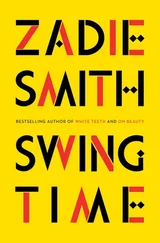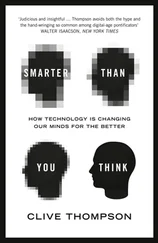Media types… their bodies and faces buzzed with glee, exhilaration-a jubilant awareness that for once, just now, at this particular right-angled intersection, they didn’t have to sit in a cinema or living room in front of a TV and watch other beautiful people laughing and hanging out: they could be the beautiful young people themselves. See? Just like me: completely second-hand.
The clubbers, the scene gays, the old boys heading to their drinking clubs-all formatted. Then suddenly he notices a group of homeless people, the way they take messages up and down the street to each other, with a sense of purpose, really seeming to own the street, interacting with it genuinely. He makes contact with one of them. He takes him to a local restaurant, buys him a meal. He wants to ask the boy something, but he can’t get it out. Then the wine spills:
The waiter came back over. He was… She was young, with large dark glasses, an Italian woman. Large breasts. Small.
“What do you want to know?” my homeless person asked.
“I want to know…” I started, but the waiter leant across me as he took the tablecloth away. She took the table away too. There wasn’t any table. The truth is, I’ve been making all this up-the stuff about the homeless person. He existed all right, sitting camouflaged against the shop fronts and the dustbins-but I didn’t go across to him.
Because, in fact, the homeless are just like everyone else:
They had a point to prove: that they were one with the street; that they and only they spoke its true language; that they really owned the space around them. Crap: total crap… And then their swaggering, their arrogance: a cover. Usurpers. Frauds.
Large breasts. Small. The narrative has a nervous breakdown. It’s the final MacGuffin, the end of the beginning, as if the novel were saying: Satisfied? Can I write this novel my way now? Remainder ’s way turns out to be an extreme form of dialectical materialism-it’s a book about a man who builds in order to feel. A few days after the fake homeless epiphany, at a party, while in the host’s bathroom, the Enactor sees a crack in the plaster in the wall. It reminds him of another crack, in the wall of “his” apartment in a very specific six-story building he has yet no memory of ever living in or seeing. In this building many people lived doing many things-cooking liver, playing the piano, fixing a bike. And there were cats on the roof! It all comes back to him, though it was never there in the first place. And now Remainder really begins, in the mission to rebuild this building, to place reenactors in it reenacting those actions he wants them to enact (cooking liver, playing the piano, fixing a bike), doing them over and over till it feels real, while he, in his apartment, fluidly closes and reopens a fridge door, just like De Niro. Eight and a half a million quid should cover this, especially as he has entrusted his money to a man much like Hans van den Broek-a stock trader-who makes money for the Reenactor (for that’s what he is now) almost as quickly as he can spend it. To facilitate his reenactment, the Reenactor hires Nazrul Ram Vyas, an Indian “from a high-caste family” who works as a facilitator for a company dedicated to personal inauthenticity: Time Control UK. It takes people’s lives and manages them for them. Nazrul is no more a character (in realism’s sense of the word) than I am a chair, but he is the most exquisite facilitator, and it is through him that every detail of the reenactment is processed. He thinks of everything. In place of the pleasure of the rich adjective we have an imagined world in which logistical details and logical consequences are pursued with care and precision: if you were to rebuild an entire house and fill it with people reenacting actions you have chosen for them, this is exactly how it would play out. Every detail is attended to except the one we’ve come to think of as the only one that matters in a novel: how it feels. The Reenactor in Remainder only ever has one feeling-the tingling-which occurs whenever his reenactments are going particularly well. The feeling is addictive; the enactments escalate, in a fascinating direction. A black man is shot by two other black men near the Reenactor’s house. The Reenactor at once asks Naz to “lay the ground for the re-enactment of the black man’s death. I think I’d have gone mad otherwise, so strong was my compulsion to re-enact it.” In this reenactment, the Reenactor himself assumes the role of the “dead black man” (who is everywhere referred to like this). His tingling goes off the charts. It’s so good, he begins to fall into trances. It’s impossible not to note here that the nonwhite subject is still the bad conscience of the contemporary novel, obviously so in the realist tradition, but also more subtly here in the avant-garde. Why is the greatest facilitator of inauthenticity Asian? Why is the closest thing to epiphany a dead black man? Because Remainder, too, wants to destroy the myth of cultural authenticity-though for purer reasons than Netherland. If your project is to rid the self of its sacredness, to flatten selfhood out, it’s philosophical hypocrisy to let any selves escape, whatever color they may be. The nameless “dead black man” is a deliberate provocation on McCarthy’s part, and in its lack of coy sentiment there is a genuine transgressive thrill. Still, it does seem rather hard to have to give up on subjectivity when you’ve only recently gotten free of objectification. I suppose history only goes in one direction. But to Remainder’s provocation it’s tempting to answer with another: that beneath the conscious ideas of this novel, a subconscious trace remains, revealing a faint racial antipathy that is psychological and social rather than theoretical. (If Netherland can be read against its own grain, which is to say, theoretically, why not read Remainder psychologically?) For though these novels seem far apart, their authors are curiously similar. Similar age; similar class; one went to Oxford, the other, Cambridge; both are by now a part of the publishing mainstream, share a fondness for cricket and are subject to a typically British class/race anxiety that has left its residue. A flashback-inclined Freudian might conjure up the image of two brilliant young men, straight out of college, both eager to write the Novel of the Future, who discover, to their great dismay, that the authenticity baton (which is, of course, entirely phony) has been passed on. Passed to women, to those of color, to people of different sexualities, to people from far off, war-torn places… The frustrated sense of having come to the authenticity party exactly a century late!
Aspects of this constructive frustration were aired publicly at the Drawing Center in New York, on September 25, 2007, when two men, Tom McCarthy and the philosopher Simon Critchley, sat at a table in semidarkness and took turns reading “The Joint Statement of Inauthenticity,” latest manifesto of the International Necronautical Society (INS). The men identified themselves only as the society’s general secretary and chief philosopher. Their voices were flat, nasal, utterly British; they placed sudden emphasis on certain words. It was like listening to a Smiths song.
“We begin,” announced the general secretary, “with the experience of failed transcendence, a failure that is at the core of the general secretary’s novels [57]and the chief philosopher’s tomes. Being is not full transcendence, the plenitude of the one or cosmic abundance, but rather an ellipsis, an absence, an incomprehensibly vast lack, scattered with-” and here the general secretary tripped over his tongue, corrected himself and continued, “-with debris and detritus. Philosophy, as the thinking of Being, has to begin from the experience of disappointment that is at once Religious (God is dead, the One is gone); Epistemic (we know very little, almost nothing; all knowledge claims have to begin from the experience of limitation); and Political (blood is being spilt in the streets as if it were champagne).” On the scratchy live recording, [58]the audience coughs nervously and is silent: there is not much else to be done when someone’s reading a manifesto at you. The INS members continue: through the brief (by now traditional) faux demolition of the Greek idealists, specifically Plato and Aristotle, who believed form and essence to be more real than anything else, and therefore perfect. “But if form is perfect,” asks the general secretary, “if it is perfection itself, then how does one explain the obvious imperfection of the world, for the world is not perfect? This is where matter, our undoing, enters into the picture. For the Greeks, the principle of imperfection was matter. Matter was the source of the corruption of form.”
Читать дальше








![Джон Харгрейв - Mind Hacking [How to Change Your Mind for Good in 21 Days]](/books/404192/dzhon-hargrejv-mind-hacking-how-to-change-your-min-thumb.webp)



